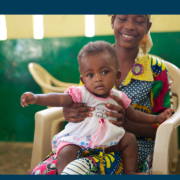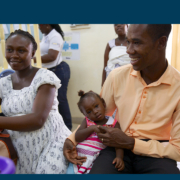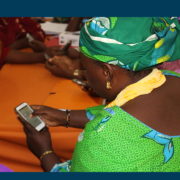Is Better Measurement the Key to Increased Investment in Social and Behavior Change for Family Planning in Francophone West Africa?
Written by: Liselle Yorke and Leanne Dougherty, Breakthrough RESEARCH
Access and demand are crucial levers in family planning programming but “understanding how these two are linked and when each should be prioritized is difficult,” note Michelle Weinberger, Emily Sonneveldt, and John Stover.
This challenge is illustrated by the relatively weak attention to social and behavior change (SBC) approaches in family planning programs. SBC is an evidence-based, theory-driven process that uses communication to identify and address behavioral determinants, and positively influence individual and collective behaviors to improve health outcomes. Available evidence shows that SBC approaches can increase the use of modern contraceptives by addressing the attitudes and social norms that influence demand. Despite proven results, SBC interventions often do not get as much attention, in part because many practitioners are not effectively measuring their SBC efforts.
Breakthrough ACTION interviewed family planning stakeholders in the Ouagadougou Partnership countries and identified a lack of awareness that SBC is needed to improve outcomes, and a belief that it does not generate the same return as investments in service delivery and procurement.
These responses reflect a broader trend across francophone West Africa, where investments through initiatives like the Ouagadougou Partnership have focused more heavily on access-driven programming. Yet Weinberger, Sonneveldt, and Stover note that without greater investments in strategies to increase demand, efforts to expand family planning use in countries with a high desired ideal number of children may achieve limited success. Investing in SBC measurement enables programs to engage in continuous learning and improvement, enables programs to demonstrate how SBC interventions improve desired outcomes, and provides evidence of SBC’s effectiveness that can be used to mobilize further investment.
What Have We Learned About SBC Indicators?
SBC family planning indicators measure the effectiveness and impact of SBC processes and interventions by type of indicator (e.g. output, outcome) and socio-ecological levels. A recent Breakthrough RESEARCH report examined SBC approaches in Burkina Faso, Côte d’Ivoire, Niger, and Togo to understand how SBC was measured and identify gaps in measurement. Drawing from more than 1,500 indicators collected from 55 current stakeholders and projects in the four countries, the Breakthrough RESEARCH report provides important insights:
- Most indicators are collected at the output level, largely because of the ease and comparative low cost of collecting data on programmatic activities.
- Nationally representative household surveys largely exclude SBC-related indicators beyond knowledge, which limits the information that can be used to improve and create programs.
- Few indicators measure SBC at the provider level, such as provider attitudes, beliefs, and communication practices.
- Very few indicators measured costs such as cost per person reached by SBC interventions.
- The limited number of policy indicators, particularly at the outcome level, may reflect challenges with measurement.
The Path Forward
Sustainable investment in family planning requires coordination across governments, funders, implementers, and civil society organizations. Although the report is not an exhaustive review, it provides recommendations for different stakeholders to assess, implement, and monitor current and future family planning and SBC programs. These include:
- Incorporate SBC indicators in national monitoring systems to enable more reliable and valid national reporting.
- Capture cost measures such as cost per person reached to facilitate budgeting and support for further investment.
- Ensure behavioral determinants, such as attitudes and norms, are included in large-scale surveys.
- Include indicators focused on SBC programming, such as attitudes, beliefs, and communication practices, at the provider level.
Read our list of 12 Recommended SBC Indicators (English and French) to determine how you can start incorporating SBC approaches and measurement into your family planning programming.

 Benedicte Kurzen/UNICEF
Benedicte Kurzen/UNICEF Cambey Mikush/Photoshare
Cambey Mikush/Photoshare Sara Holbak/VectorWorks/Photoshare
Sara Holbak/VectorWorks/Photoshare Sarah Hoibak/VectorWorks/Photoshare
Sarah Hoibak/VectorWorks/Photoshare Getty Images/Image of Empowerment
Getty Images/Image of Empowerment Shani Turke/Photoshare
Shani Turke/Photoshare Shani Turke/Photoshare
Shani Turke/Photoshare